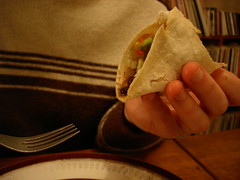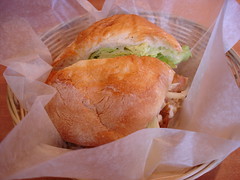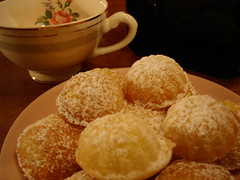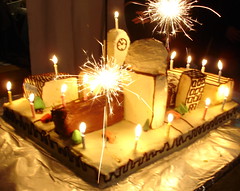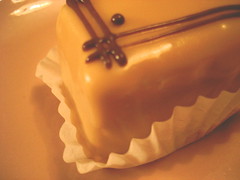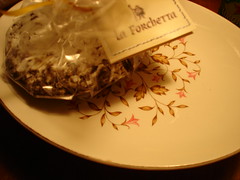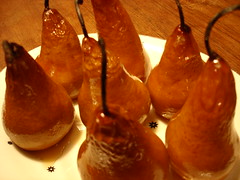The Joy of Mexican Chocolate
If you’re looking for a nice dessert accompaniment to Baja-style fish tacos (see "A Little Taste of Baja in Montreal," directly below), look no further. My sister gave me a call last week and tipped me off to this cookie recipe. She’d tried making them a day or two earlier, and she was raving about them. I’d read the Saveur issue it came from, but somehow I’d glossed over this particular recipe. Maybe it was because this year’s “The Saveur 100” issue was so lackluster. For the past few years their New Year’s extravaganza has been something we really look forward to. The last few lists of Saveur’s faves have not only made our mouths water, they’ve been hugely inspiring. This year, in spite of Editor-in-Chief Colman Andrews’ claim that they, “haven’t run out of things to write about after all,” I think it’s safe to say that the list contains a little too much filler. The smell of bacon? The kitchen window? Peanut butter and jelly sandwiches? Pain au chocolat (not from anywhere in particular, just in general)? C’mon! Don’t get me wrong, the issue as a whole contains a lot of the quality food reportage we’ve come to expect from Saveur, but…
In any case, these Mexican Chocolate Icebox Cookies are a true winner. I think I’ll even venture to say they’re the best chocolate cookies I’ve ever tasted. When baked on a baking sheet, they turn out thin, like a crisp-style cookie (not like the thick cookies featured in Saveur’s accompanying photograph), but they still manage to have a rich, chewy, chocolaty center to them. This combination of crisp and chewy is ideal, but the real kicker comes from the flavors. The “Mexican” aspect to this cookie comes from the spices, not from the chocolate—any “Dutch-process” unsweetened cocoa will do (although we used Valrhona because we find its flavor to be the best). Your first sensation is the rich chocolate flavor, then, a second or two later, comes the cinnamon, and finally, a few seconds after that, the peppers kick in, giving the chocolate flavor a wonderful spicy warmth. The whole experience is really something else. Oh yeah: and be sure to try a nibble or two of the cookie dough. Michelle and I both thought the exact same thing when we did: Mexican Chocolate Icebox Cookie Dough Ice Cream (stay tuned, recipe to follow)!
We brought some Mexican Chocolate Icebox Cookies to a lovely vernissage (Felicitations, Val!) hosted by our friend Hermine the other night. They were so good, and they were so popular, that she ended up hiding a few of them so that they wouldn’t disappear completely. Today, she asked me if we were going to post the recipe. Voila!
Mexican Chocolate Icebox Cookies
1/2 cup flour
3/4 cup quality “Dutch-process” unsweetened cocoa
3/4 tsp ground cinnamon
1/2 tsp cayenne
1/4 tsp salt
1/4 tsp freshly ground black pepper
1 cup sugar
1 1/2 tsp vanilla extract
1 egg
12 tbsp cold unsalted butter, cut into small pieces
Whisk the flour, cocoa, cinnamon, cayenne, salt, and pepper together in a medium bowl and set aside. Put sugar, vanilla, and egg into a large bowl and beat with an electric mixer on high speed until thick and pale, about 3 minutes. Add butter and continue to beat on high speed until smooth, about 3 minutes more. Using your fingers, work flour mixture into butter mixture until dough is just combined (in other words, do not overwork the dough).
Divide dough in half and roll each half into a 9” log. Wrap each log in parchment paper, twisting ends tightly to make a uniform cylinder. Freeze dough logs for at least 8 hours and as long as overnight.
Preheat oven to 350˚ F. Unwrap dough and slice each log into rounds and 1/3” thick. Place rounds 1” apart on parchment paper-lined cookie sheets. Bake cookies until slightly puffed and tiny cracks appear on surface, about 8 minutes. Transfer cookies to a rack to let cool.
Makes about 4 dozen cookies.
[This recipe, with a couple small changes, comes from Saveur’s “The Saveur 100” issue for January/February 2005. The original recipe comes from the Liberty Bar in San Antonio.]
aj
